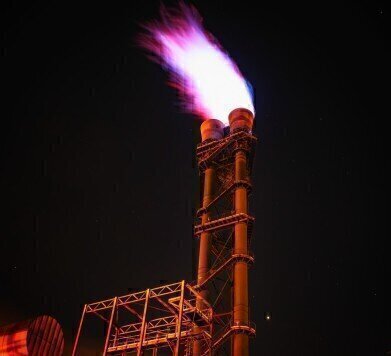Environmental Laboratory
How Does Gasification Work?
Jan 31 2016
Gasification is a centuries-old technology which may well be making something of a comeback in the coming years. First discovered by Scotsman William Murdoch in the 1790s, the process involves treating carbon with a small amount of oxygen and pressurised steam. This converts the carbon into a gaseous form, composed mainly of hydrogen and carbon monoxide.
Of course, some harmful contaminants are generated as by-products during the process, including sulphur, mercury and carbon dioxide. These can easily be filtered out of the mixture using a gas clean-up process, leaving behind syngas (a combination of carbon monoxide and hydrogen). This syngas can then be used directly as a fuel source or can provide the basis for other commodities, such as methane, fertilisers or other kinds of fuel.
There are two main types of gasification: coal and biomass.
Coal Gasification
A traditional coal-fired power plant will use oxygen and heat to burn coal and transform it into a usable gaseous energy form. However, with gasification, only limited amounts of oxygen are used. Significantly increased temperatures and pressures are utilised instead, with a typical coal gasifier using temperatures of around 1,400°C and pressures of approximately 7,000 kilopascals.
The oxidation of the coal produces heat, which helps to catalyse the gasification reactions. The remaining coal is reduced to a charcoal-like substance, while the majority of it is converted into a mixture of gases, including the desired carbon monoxide and hydrogen. Impurities are removed during the clean-up process.
The remaining syngas can then be burned cleanly in a gas turbine or used as the basis for methane production, generating a sort of substitute ‘natural gas’. This is achieved by combining the syngas with carbon dioxide found in nickel. Though it’s produced artificially, this form of methane behaves just like the natural variety and can be used as a viable energy source.
Biomass Gasification
While coal is the primary source of gasification energy due to its high carbon content, any substance which contains carbon can be used. This can range from wood to crops to waste – in fact, determining the value of waste materials as fuel feedstock has provided environmentalists with an exciting new energy form which is both renewable and largely clean.
Biomass gasification functions in much the same way as coal gasification, except the coal is substituted for a feedstock. This feedstock is normally comprised of one of the following four options:
- Forestry waste, which encompasses all timber left behind after the harvesting of woodland areas.
- Agricultural leftovers, including the wheat, corn, barley, bean and alfalfa that was not picked up when the fields were originally harvested.
- Energy crops, which are intentionally grown for the express purpose of providing biomass energy. These include switchgrass, willow and poplar trees.
- Urban wood waste includes all materials which contain carbon in some form or other but would normally be destined for a landfill site.
Gasification methods of home heating, lighting and even fuelling transportation were popular in the 1800s and early 1900s, but fell out of favour with the discovery and proliferation of fossil fuels. Now that oil, coal and gas is in dwindling supplies, gasification could be set for the unlikeliest of comebacks.
Digital Edition
IET 34.2 March 2024
April 2024
Gas Detection - Biogas batch fermentation system for laboratory use with automatic gas analysis in real time Water/Wastewater - Upcycling sensors for sustainable nature management - Prist...
View all digital editions
Events
Apr 30 2024 Melbourne, Australia
Apr 30 2024 Birmingham, UK
May 03 2024 Seoul, South Korea
May 05 2024 Seville, Spain
May 06 2024 Minneapolis, MN, USA


















